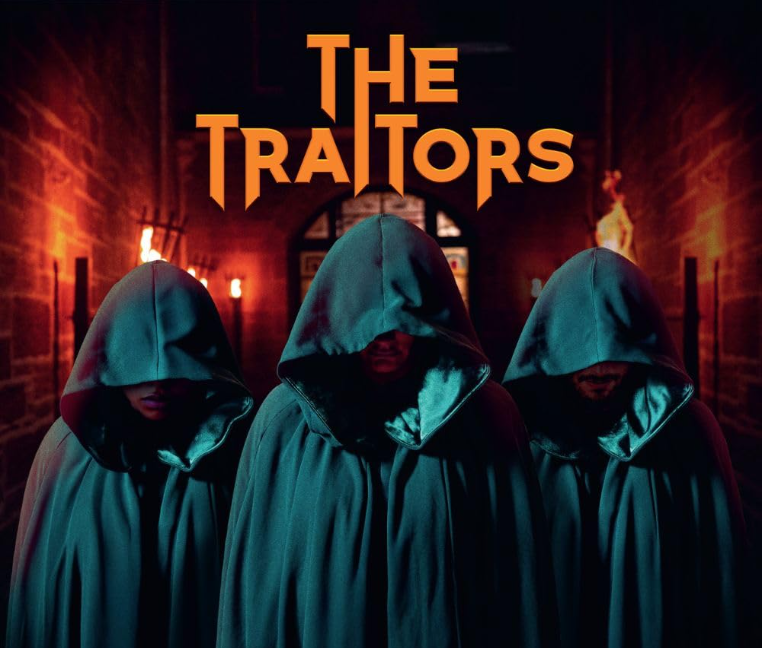How algorithms influence social media – and what you need to do
You may not be aware of it, but maths is influencing the way you consume your news and other information. Whether you’re looking at search results or your social media accounts, what you see is filtered by algorithms (mathematical rules specifying the way a group of data behaves) based on both your past history and the quality standard of the available content.
Put simply, an algorithm decides what someone sees when they log on to a social site. Equally, with so many users of social platforms, algorithms attempt to install some form of order.
Inevitably, they’re always changing and being updated, and they differ from one platform to another.
Interestingly, one Harvard Business School study found that, perhaps contrary to received wisdom, many people actively prefer information that’s come from an algorithm instead of a human source.
And as an increasing number of us receive more of our news from social media, algorithmic calculations have probably never been more important. Even if the social media giants are often tight-lipped about the way they make the various calculations, and the functioning of algorithms may sound a shade sinister, they’re actually there to help, and there are various things you can do to work with them.
It’s well worth understanding what these algorithms are and how they work so your social content has maximum impact, becomes a trusted source of information, helps prevent the spread of fake news, and maximises ROI. So, below is our summary for each of the main social media giants – you’ll find the differences between them can be considerable.
As you produce and post content, bear in mind, too, that the tide has turned from fake news, bots and clickbait back towards more meaningful conversations and building a community rather than an audience.
Popular with a range of influential people from the political and media elite, this platform is quick and easy to use.
One thing you may notice is that tweets in your account are not shown in chronological order, since the algorithm organises them in the order deemed most relevant (although time is still a factor, since Twitter also sees itself as a live news site).
In recent years, the platform has taken steps to ban bots or automatic postings, and it also doubled its allowed characters per post from 140 to 280 – though average message length is typically 35 characters.
To work best with the algorithm:
• Understand when your followers are online, and tweet then.
• Have a credible, regularly updated profile.
• Make the most of the character limit.
• Post every day and engage with followers.
• Make sure content is specific and relevant to your audience.
YouTube
With two billion users worldwide, YouTube is the world’s second-largest search engine, making this video platform an unstoppable force. This can, however, make its algorithm a tough nut to crack, and it can also be a hard place to build an audience from scratch. To work with the algorithm, which is AI, you should aim to post twice or three times weekly. Optimal length per video is seven to 16 minutes.
Ranking factors tend to be based on numbers of posts and subscribers, alongside audience retention, views, likes and total watch time. Title, keyword tags and description are also important. Equally, the tough competition in terms of both numbers and quality of content makes it consistently challenging – not least when it comes to finding a new angle and fresh subject matter.
A select few users are shown any new video in the first instance, as a trial to assess initial engagement.
To work with the channel:
• Publish consistently – ideally at the same time of day and week.
• Do whatever you can to encourage subscribers and build your user base.
• Make videos interesting and relevant and enjoyable to your target audience. Don’t try and encourage ‘dislikes’ by being controversial – it won’t do you any favours.
• Do hook in viewers with an attention-grabbing, arresting introduction.
It’s generated the odd controversy along the way, but business networking site LinkedIn (with 575m users, a force to be reckoned with) has been one of the more ‘open’ platforms when it comes to its algorithm. This blog from a few years back, for example, shows that the website uses real people as well as an algorithm. If those ‘real people’ feel a post is good enough to reach a wider audience, it will.
It’s worth bearing in mind that LinkedIn is about networking rather than striving to build as many followers as possible at all costs, and it has more Fortune 500 company users than any other social platform.
The site works on first, second and third-degree connections, with the ‘first’ connections being your direct contacts. Second-degree connections are those linked to your first-tier contacts; third-degree connections are people and organisations connected to them. To work with the algorithm if you’re aiming to go viral, all degrees of connection need to see your content. Another trick is to stick to single-sentence paragraphs when writing a personal narrative.
Here are some more tips for working with the LinkedIn algorithm:
• Relevant connections are important – stick to your own industry or sector.
• Engage with your network – like, share and comment on others’ content.
• Go native – prioritise native content – i.e. where you’re sharing directly on the site without asking readers to click and leave the website to go elsewhere.
• Status update boxes may get you more visibility than blog posts.
Increasingly a cultural force, this Facebook-owned video and photo-sharing site is at the heart of the social media ‘influencer industry’, and is itself hugely influential. The focus is on showing people as much content as possible in a day.
It launched its algorithm a few years back in a bid to give users the most relevant content.
Engagement takes priority over chronology, so you may not always see most recent posts first. Posts are shown to a limited audience first to assess engagement.
Be aware that comments are given greater weighting than ‘likes’ on Instagram. While optimising a post via the 30-hashtag limit is a good plan, and makes it stand out, don’t use identical hashtags on every post.
Here are some ways of working well with the algorithm:
• Frequent posting: Post with consistent regularity and the algorithm will reward you.
• Be engaging: Engage with users and content which have relevance to your own Insta profile – this drives users to your brand
• Timing is everything: Timeliness is a key criteria for this algorithm. Discover the best time and day for your posts and stick to them.
• Get seen on the Explore page: Instagram’s Explore page is on same page as the platform’s search function and shows each user different pages based on accounts they don’t yet follow that are run by people or organisations relevant to their interests. With clever hashtag use, you can get to the top of this page and generate potentially thousands of followers and ‘likes’.
Facebook is, of course, ‘the big one’ – arguably the world’s largest social media site. Formerly called EdgeRank, the Facebook algorithm has been the subject of global controversy in recent years. The tech giant has spent the past few years tweaking it, in the wake of alleged election and referendum interference, and was fined a record $5bn in the summer of 2019 over privacy concerns. This followed probes into Cambridge Analytica, after allegations that the company had obtained information on 87 million users of the site.
Facebook has worked hard to eradicate fake news and clickbait, and has decreased the organic reach its pages once had, along with reducing the impact of its news feed.
In January 2018, founder and SEO Mark Zuckerberg said the algorithm would prioritise ‘meaningful social interactions’. That meant it would favour content which would encourage friends and family to talk about it, rather than external links, i.e. prioritising quality over quantity.
As with certain other platforms, a small percentage of users see posts first to assess initial engagement. Every piece of content is rated with a quality score based on how relevant it is to the user. The higher the score, the more likely it is that it will show up in a user’s news feed.
The algorithm also prioritises links shared via its Messenger function, alongside user credibility, live and native video and those posting around five times daily. Things it doesn’t like include clickbait, sensationalist content, actively asking for likes, and false headlines.
Working with the Facebook algorithm
Here’s what you need to do:
• Develop a video strategy with high-quality, native content.
• Post often – but make every post count – and know when to post.
• As ever, know your audience so you know what content will resonate most strongly with them.
• Hashtags can be underused on Facebook but can help content be found, as long they are not over-used or otherwise misused.
• Reply promptly when someone interacts with you.
• Facebook Insights can help you learn more about your posts’ performance.
So, in a nutshell, it’s about great content and meaningful engagement.
Summing up
As mentioned earlier, social media algorithms are always being updated. Equally, it may never be possible to understand everything about all of them. You need a dash of common sense, good use of the information that is available, and some basic assumptions – in addition to continuous testing of your own posts to see what works.
What’s also worth remembering is that it’s generally better to focus on no more than three platforms and do them well (i.e. post relevant, high-quality, valuable content at the right times, accurately aimed at your target audience) rather than attempting to maintain a presence on a plethora of platforms.
Finally, perhaps we all need to work together to put pressure on the social media companies to be as open as they can about their algorithms, to help us take full advantage of the marketing potential of our chosen platforms.

.jpg)


